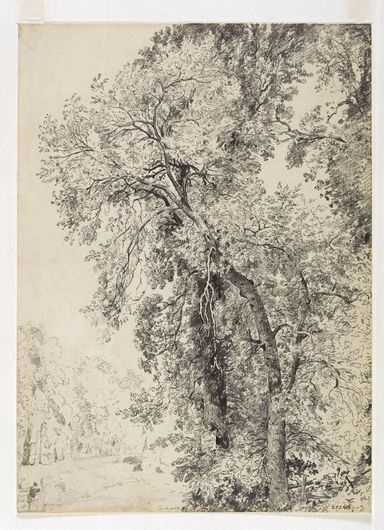How experiences of ash dieback have informed attitudes toward Emerald ash borer in the UK
Qualitative interviews were undertaken with the aim of supporting the development of a model on social values and acceptability of different emerald ash borer surveillance and management options. We also specifically wanted to understand how decisions were affected by multiple tree health threats, investigating current experiences of and approaches to management of ash dieback. To do this, we conducted 45 semi-structured interviews between August 2021 and December 2022; 10 with key informants and 35 with land managers of nine different land manager categories.
Key informants were recruited to provide insights into the state of ash trees and ash dieback in the case study areas, information on management of emerald ash borer, and information on potential entry-points of emerald ash borer. Industry experts and firewood traders were therefore invited for key informant interviews. Land manager interviewees were then purposively sampled through key informant interviewees and other key contacts, adopting a snowballing approach. We also drew additional interviewees from the land manager survey to boost numbers. Recruitment focused on the case study areas: North Wales, Kent and Suffolk as well as national-level managers.
An interview guide was developed to guide the interviews and intelligent transcripts were produced. These were stored and analysed in NVivo V12. A qualitative coding framework was developed based on the research questions as well as on themes emphasised by interviewees. The coding framework was tested on five interviews and then applied to the full set of interviews.
The interviews helped us gain an insight into three key elements: perceptions and attitudes towards surveillance and management options; towards different policy control scenarios (eradication, containment and deregulation); and the different factors influencing decisions in those scenarios. We also specifically looked for accounts where experiences with ash dieback influenced the values attributed to ash trees, and thinking and intended actions in relation to emerald ash borer.
We found that while remaining ash trees were considered more valuable, and the arrival of ash borer was seen as “pretty tragic” (manager of a public woodland), this did not necessarily translate into increased intentions to manage emerald ash borer due to at times defeatist perceptions of the effectiveness of actions. While there are a range of experiences and perceptions of the impacts of ash dieback, with some stating that the disease has not been as devastating as expected, most managers had seen widespread infection among their trees and had needed to undertake significant felling. As the perceptions of the severity of ash dieback affected perceived ability to successfully manage emerald ash borer, the predominant view was that at a certain point, it would not be worth it. Typically, that point was somewhere between eradication and containment: “[containment is] delaying the inevitable” (local authority).
More professional interviewees also tended to draw on experiences of other pests and diseases such as Dutch elm disease, oak processionary moth and Phytophthora ramorum. Small woodland owners and farmers referred to previous experiences of Dutch elm disease and farmers specifically on management of other pests and diseases relating to their crops and even livestock.
My experience with Elms was that [chemical injection] was expensive and prolonged the agony, they still died, nothing survived. (farmer)
While some managers recognised that emerald ash borer will act completely differently to ash dieback, many reported that they would still approach the infected trees in a similar manner, focusing monitoring and management actions based on health and safety risks rather than on preserving ash trees. However, responses were nuanced and some managers were keen to reduce the spread and, in a few cases, suggested felling healthy trees in a containment and deregulation scenario with the intention of protecting other ash trees nearby. This is an approach that deviates from current advice on ash dieback management.
Decisions around surveillance and management actions were influenced predominantly by costs and resources, perceptions of efficiency, and availability of support. While support for different surveillance methods varied based on the land manager type, most managers were willing to engage in some sort of surveillance. However, there was an expectation that at the point of early detection, eradication and to some extent containment, surveillance would be led by the government.
we would be looking at working with the Forestry Commission in England and NRW and say, “How can we help?” […] it would be well within our interest to try and be involved in that and make sure that we can help with it. (Private large landowner)
Especially land manager types with fewer resources considered this type of work too specialised for them to feasibly implement themselves without support, typically seeking guidance and provision of materials. Actions outlined for the eradication (i.e. felling an area of 400m and surveillance including girdling with insecticide) was generally seen as positive but managers expected this to be led and financed by the government. Containment was less supported based on the perceived ineffectiveness of this approach for other pests and diseases, and there was widespread reluctance to undertake these actions, particularly if they were not led and partly financed by the government. There were several indications that a level of non-compliance would take place in such a scenario.
At the point of containment or deregulation, surveillance efforts would transform into more traditional monitoring and would partly be dictated by existing monitoring practices. These would focus on identifying management actions required to reduce health and safety risks rather than preventing the spread of the beetle.
I think we could build our surveillance in with existing surveys in wild parks that are going on. I don’t think that would be too much of a problem. Certainly if we’re doing ash dieback surveys every year anyway, we’re always looking at ash trees so yes, we could add that in without an issue. (land based charity)
The findings of this project highlight that for surveillance and management to be effective, it is important to understand the likely reactions of land managers to those actions. Clear and convincing arguments will need to be made for the needs of targeted interventions to overcome the sceptical orientation of many managers. In addition, while there is general willingness around surveillance, various types of support will be needed to get widespread collaboration with different types of land managers. Ultimately, land managers will be drawing on strategies, policies, practices, tools and information sources which they have already built as a result of ash dieback. This poses both a barrier and a potential opportunity for incentivisation of actions in the face of emerald ash borer.

